How to Survive an Avalanche
You could be out enjoying the sunshine on a beautiful day just following a snowfall, and out of nowhere, you notice an avalanche barreling towards you from far up on the hill. You only have a few seconds before it hits you. Besides being utterly terrified, would you know what to do? Fortunately, there are a number of steps for you to take that could very well save your life. Here’s how to survive an avalanche. In case you missed this post, Melting Snow for Survival Tips
How to Survive an Avalanche
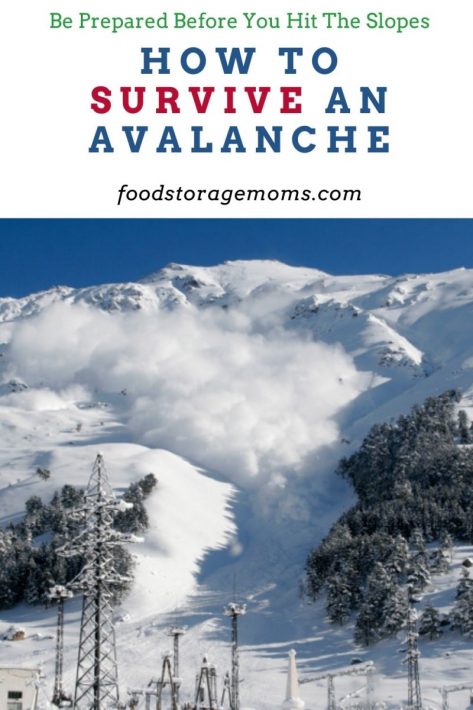
1. Attempt to Jump Up the Slope
For a vast majority of the victims who get caught up in an avalanche, the avalanche usually starts off right at their own feet instead of falling from above. Now you may be thinking that this tip is next to impossible to do, and you’d be right, but it has been done before. That’s because avalanches usually don’t give you much time to react. But if you can, try to jump up the slope and across the fracture line so that you can get out of harm’s way.
2. Get to the Side of the Avalanche
Many victims make the mistake and try to run down the hill to get away from an oncoming avalanche, but this is futile. It will mow you over due to its speed. By moving as quickly as you can away from the middle, you’ll be getting yourself away from the fastest moving point, and the place in the avalanche that has the most volume of snow. If the avalanche takes place far above you, there’s the chance that you may be able to get out of the way in time if you react quickly.
3. Drop Your Equipment
Another factor that may save your life, is to take off any gear or other equipment that you might be wearing and ditch it. This will lighten your load and increase your chances of getting away safely. Be aware, some say that you should still keep your backpack with you because it may protect your neck and back from serious injury when everything starts to pile on top of you. It is very difficult to dig yourself out of the snow when covered, but if you happen to be nearer the surface the backpack may hold you back due to the weight. Each situation is different.
4. Try to Hold on to Something
If you know that there’s no way you’ll be able to get out of the way in time, try to get yourself to a nearby larger tree or boulder that you could hang onto. This method would work on smaller avalanches, but if it’s a massive avalanche, they’re known to completely remove these types of objects. Even if you’re not able to hold on to a particular object for the duration of the avalanche, it will still increase your chances of not being buried nearly as deep.
5. Just Keep Swimming
Once the avalanche has surrounded you, attempt a swimming motion by kicking your legs and moving your arms. This will help you stay closer to the surface of the snow instead of completely sinking beneath. There are two things that you need to keep in mind when you do this:
- Swim uphill. By swimming up, you’ll be able to stay closer to the surface.
- Swim on your back. Should you become completely buried, this will provide you with a better chance of getting oxygen with your head turned to the surface.
6. Figure Out Which Way is Up
This is where things can be a bit tricky, especially if the victim becomes disoriented. There are two ways that you can find out which way is up so that you can hopefully get yourself oxygen. Try holding your hand straight up over your head and see if it reaches the surface of the snow. This step may also help others find you easier. You could also try spitting saliva from your mouth. Your spit will move down, so you’ll want to work your way in the opposite direction.
7. Create a Pocket Around Your Face
When you’re thinking that the avalanche is about to settle, be sure to take in a huge gasp of air and hold your breath. Because once the snow rests, it may harden into something as heavy as concrete and you’ll need plenty of breathing room so that you can get some air. If you’re buried deep enough, it will be impossible for you to get out on your own.
Until someone is able to rescue you, in the meantime you need to create an air pocket around your face and nose so that you can get some air. Do this by using your free hand to form a hole in the surface, or by using a small shovel. This method should provide you at least 30 minutes of air. Depending on how deep the snow is, you may be locked in the space and position when the snow stopped moving, and moving you arms or hands may not be an option.
8. Conserve Energy and Air
If you happen to be close to the surface, you can try to dig your way out, but try not to lose your air pocket for breathing. If you’re unable to move at all, try to remain calm and conserve your energy. This will provide you with more breathing time until rescuers are able to dig you out. If you happen to hear people close to you, you can try to call out to them. Shouting will take away from your oxygen supply, and possibly won’t do you any good if you are buried deep in the snow. If you think you are fairly close to the surface it is certainly worth a try, but they may not hear you.
9. Wait Patiently
As long as you have an avalanche beacon and probe with you, help will be on the way. All you can do at this time is to wait patiently and try to remain calm. This is an important tip as part of your efforts to survive an avalanche.
10. Always Take Survival Equipment with You
By having the right equipment with you, your chances of surviving an avalanche will increase significantly. You should never hit the slopes without these crucial items:
- Avalanche receiver and probe (The receiver helps signal where the person is buried, while the probe locates exactly where the person is. Everyone in your party should carry both.)
- Helmet (Protect your head from the initial impact and from hitting other objects around you.)
- Small shovel (For creating an air pocket so that you can breathe.)
- Skier’s airbag (Helps keep you toward the surface of the snow.)
How to Survive an Avalanche
Final Word
You’ll be much likelier to walk away from an avalanche if you are able to follow these steps before and afterward. A key point is to check weather and avalanche forecasts BEFORE you go out, and stay away from the backcountry if there is any chance of avalanche activity where you plan to go. If you want to get more practice, I’d also suggest that you take an intensive avalanche training course, not only to protect yourself but others around you. Have you, or someone you know ever experienced being buried beneath an avalanche? What helped get you (or them) through it? How do you plan to survive an avalanche? May God Bless this world, Linda.
Copyright Images: Avalanche Dry Snow Deposit photos_61959163_s-2019

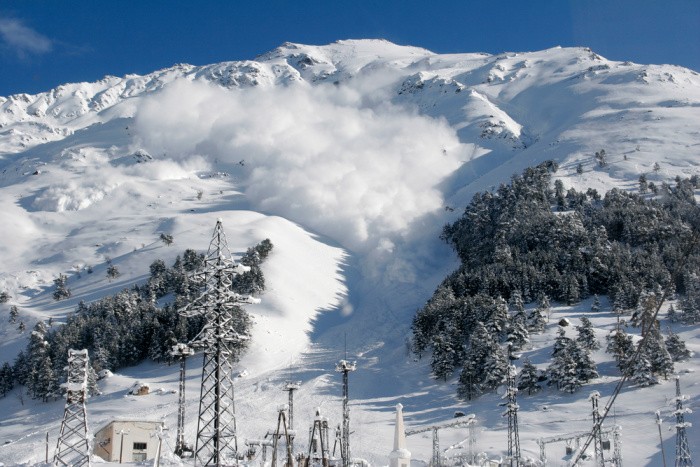


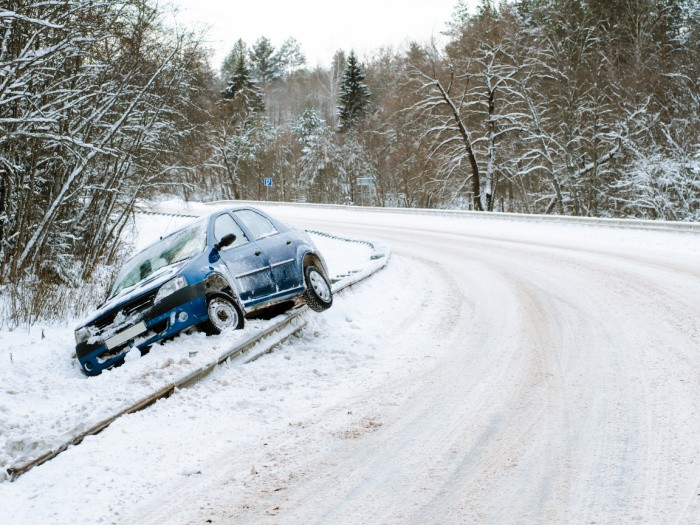
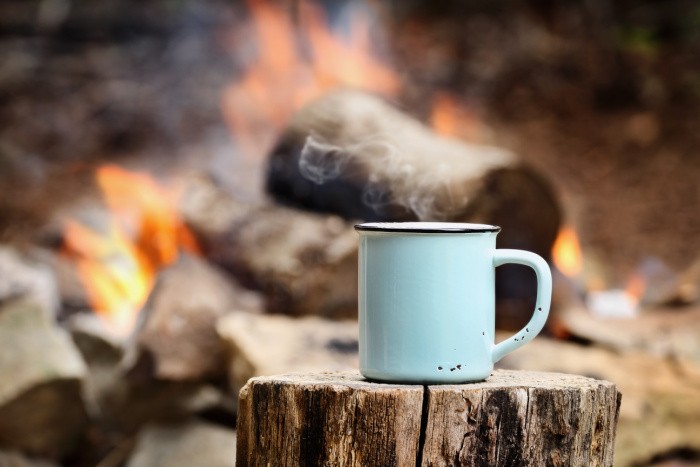
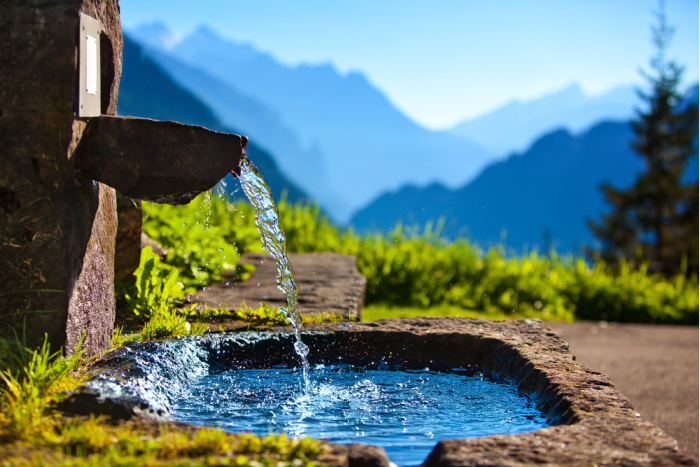















Linda, excellent advice. My wife and I lived in the Colorado mountains for more than 30 years and had more than one brush with avalanches, including once being stranded on US 40 on Berthoud Pass when dual slides blocked the highway in front of and behind us. We were on our way home from a day skiing in Winter Park when the slides trapped us, an older couple, a car full of college girls and another car with a young family. This was back in the 70’s when I was into winter mountaineering and back country skiing. I always had a backpack full of survival gear in the back of my old beater. That gear allowed all of us to build a fire, have a small meal, some hot chocolate and camp in comfort overnight while waiting for the road crews to clear the slides. It pays to be prepared.
Hi Ray, wow, what a great story! Thanks for sharing. My grandkids snowboard and split-board here in the mountains of Utah. We have some of the best snow on earth here. I always ask them if they still carry their equipment, they assure me they do. We had our first fatality here about a week ago up north. Out of towners don’t know the danger of avalanches. Thank goodness you had provisions in your car. The “old beater” I remember those days. I love it. Great comment, Linda